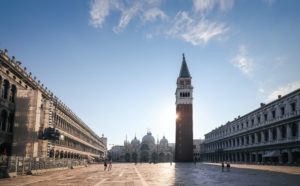We are all well aware of photos of popular tourist destinations such as Venice or Barcelona. We all see Venice this way:

But in fact, a tourist who comes there will see this:

While many tourists want to “live like the locals” and feel the real immersion of their visit, locals in many tourism-dependent destinations see a unique sight as their hometowns disappear under a wave of souvenir shops, crowds, tourist buses and crowded bars. They also suffer from enormous pressure on local infrastructure.
The rapid development of the travel and tourism industry involves more and more people in its cycle. Against the background of the growth in the number of representatives of the middle class, the planning of the development of the tourism sector “played along” with the swelling of over-tourism.
Overtourism occurs when there is a mismatch in one of three conditions:
- Between the volume of tourism activity and the capacity of the destination
- Between the type of tourism activity and local potential
- Between traveler behavior and local social norms
The economy of exchange, the “uberization” of services, and affordable transport (low-cost) make it possible to quickly move large numbers of tourists from the middle class. Social media serves both as a catalyst for demand for new experiences and as a means of connecting with service providers. The market is pulsing faster and faster.
The following are the consequences of over-tourism:
- Alienated locals
- Degradation of tourism sector
- Overloaded infrastructure
- Damage to nature
- Damage to cultural and historical heritage
Thus, we can understand that the threat of overtourism is a threat to all of us: every traveler, every business, every destination and every organization in the global tourism industry, which is why many organizations in popular tourist destinations have already adopted different flow planning policies:
Increased capacity – obviously, this is the ability of a place to support tourism activities without sacrificing itself. Carrying capacity can have physical parameters – for example, estimating the maximum number of people a walking trail can carry before it fails would put tourists at risk. Or – the maximum number of tourists that can stay in a village without overloading the local water supply system.
The capacity can also be psychological. For example, how many tourists can be present in the square of a small town without disturbing the locals, or how many people can be at the same time in the place of observation of the landscape before the feeling of discomfort appears and the atmosphere of the place is destroyed.
Setting the limits of acceptable change is the degree to which local actors are willing to put up with changes in their hometown or area in exchange for a growing tourism economy.
The limits of acceptable change may relate to identifying unacceptable construction projects – such as large hotels – overwhelming traditional architecture or excluding buses from the city center, which increases pollution and congestion.
Visitor flow management is the process of planning how tourists travel to their destination. This requires an idea of how many tourists are likely to be in your location on any given day, what places they will try to visit, and what traffic patterns they are likely to use. Based on this data, tourist flows can be influenced and directed in such a way as to provide guests with a high quality service while limiting the pressure on the place, residents and resources.
McKinsey & Company (2017) Coping with success. Managing overcrowding in tourism destination. Retrieved from: https://moodle.tru.ca/pluginfile.php/1576542/mod_resource/content/1/Resources%20%20Managing%20Overcrowded%20Tourism%20Destinations.pdf
World Tourism Organization (UNWTO); Centre of Expertise Leisure, Tourism & Hospitality; NHTV Breda University of Applied Sciences; and NHL Stenden University of Applied Sciences (2018), ‘Overtourism’? – Understanding and Managing Urban Tourism Growth beyond Perceptions, Executive Summary, UNWTO, Madrid,
DOI: https://doi.org/10.18111/9789284420070